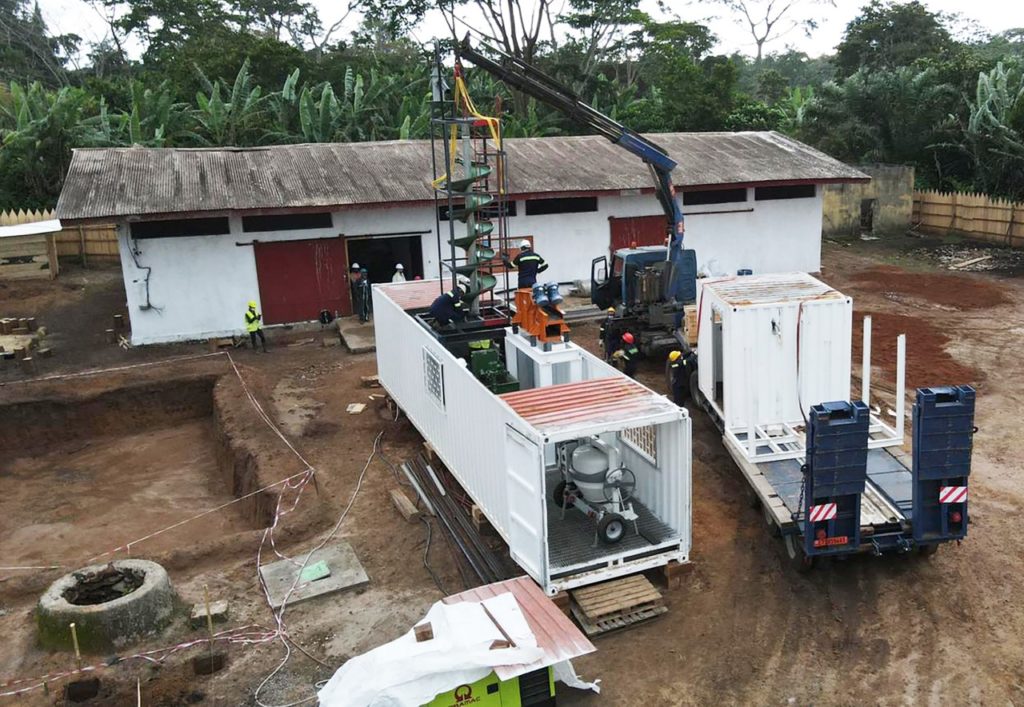Exploring for heavy minerals in Cameroon, a multinational mining company is gaining valuable results and insights through the use of an on-site pilot plant from South Africa-based process equipment leader Multotec.
The pilot plant was designed and assembled at Multotec’s extensive design, manufacturing and testing facilities at Spartan near Johannesburg, South Africa, and shipped to the remote site in central Africa last year. The containerised plant includes a range of Multotec’s own equipment including screen panels, cyclone rig and spiral rig.
According to Faan Bornman, Technology Manager: Research and Development at Multotec’s Technology Division, drill samples from the prospect area are passed over the screen to remove oversized material, with undersize going into a sump to be mixed with water to the correct density. The undersize material reports to the cyclone for desliming – the removal of very fine particles – delivering an underflow with an optimal size range of between 38 microns and 1 mm. This is fed to the spiral rig for concentration, with the spiral delivering a concentrate, middlings and tailings. The process allows the project to assess its economic heavy minerals portion, which is concentrated towards the inner section of the spiral.
“Multotec’s HX5 and 117HM spirals were employed to suit the customer’s requirement, with the new 117HM spiral showing great recovery in mineral sands,” Bornman says. “With the HX5 handling up to 5.5 t/h and the 117HM 2.3 t/h, these spirals also offer different recoveries and grade in the various heavy minerals.”
The equipment in this pilot plant is vital to achieving an accurate assessment of the deposit’s viability, but the results also give the customer important insights into how the full-scale plant should be designed if exploration proves results provide positive, according to Multotec.
“To ensure that the customer receives optimal value from the pilot plant, we sent a process engineer to site to commission the system,” Bornman says. “During the several weeks that he spent there, he also conducted training with local staff on how to run and maintain the plant.”











